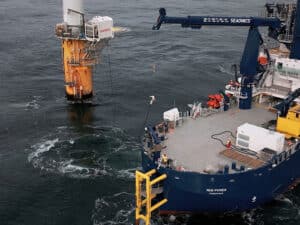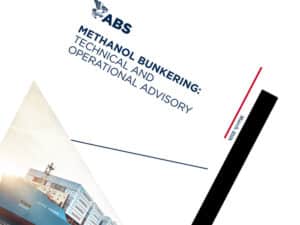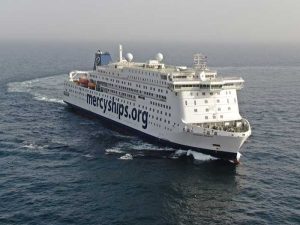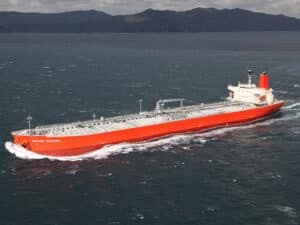
Doubler plate repair lets bulker sail after collision
Written by Nick Blenkey DECEMBER 14, 2012 — After a190-meter bulker suffered severe collision damage in Lagos, Nigeria, a large hole in the hull plating prevented the ship from sailing at full speed. The classification society demanded that the vessel go to dry dock immediately unless an on-site solution was found. Hydrex was called in and sent a diver/technician team to the vessel’s location to carry out an emergency doubler plate repair at anchorage.
DECEMBER 14, 2012 — After a190-meter bulker suffered severe collision damage in Lagos, Nigeria, a large hole in the hull plating prevented the ship from sailing at full speed. The classification society demanded that the vessel go to dry dock immediately unless an on-site solution was found. Hydrex was called in and sent a diver/technician team to the vessel’s location to carry out an emergency doubler plate repair at anchorage.
A dredge had smashed its bow into the port side of the bulker while the ship was unloading its cargo in Nigeria. A large hole in the vertical side of the ship was the result. In total an area of 4.35 meters wide and 4.10 meters high was deformed. Only a stroke of luck prevented an enormous ingress of water, with a possible disastrous result.
The dredger hit the hull plating at the location of a ballast tank. This made it possible to close off the area behind the hole before too much water had flooded into the vessel. A second fortunate factor was that the bulker was still relatively full when the accident took place. This allowed the crew to bring most of the gap above the water by unloading the ship further and deballasting it.
In this new condition the ship was only allowed to sail at a minimum speed and for a very short distance. It was essential to devise a plan that could be carried out as soon as possible and on-site.
A temporary repair was proposed to the owner shortly after he contacted Hydrex. A special doubler plate would be made and installed over the opening. This would give the owner the opportunity to take his ship to dry dock when he wanted and where he wanted.
The owner agreed.
Because of the rainy season in Nigeria, underwater visibility was almost non-existent and the current was too strong to carry out repairs at anchorage. Abidjan was the closest location suitable for this type of operation.
The bulker left Lagos at a diminished speed and sailed for Abidjan where a Hydrex crew had flon to meet it.
After the bulker let down anchorage in Abidjan, the vessel was listed towards the starboard side to bring the hole in the port side entirely above water. This allowed the Hydrex divers to make a full inspection of the damaged area.

The team cut away part of the deformed plating. This created an even surface to position the doubler plate. Next the team made crack arrests to make sure that the cracks would not spread any further.
The bottom part of the doubler plate was then lowered from the deck and positioned over the lower half of the opening. This part of the plate was 4.5 meters wide and 2 meters high. The diver/technicians then welded the plate onto the hull. Horizontal stiffeners were installed on the plate to give it extra strength. This could not be done in advance because it would have prevented the team from adjusting the plate to the exact shape of the hull.

The same procedure was repeated for the top part of the doubler plate. This part of the plate was trapezium-shaped with a base of 4.5 meters wide and a height of 2.5 meters. Both parts of the plate were then welded together to finalize the repair.

A Bureau Veritas surveyor was present during the operation and signed off on the repair. The shipowner was then able to arrange a drydock visit for the vessel where and when it would fit best into his schedule.





Leave a Reply
You must be logged in to post a comment.